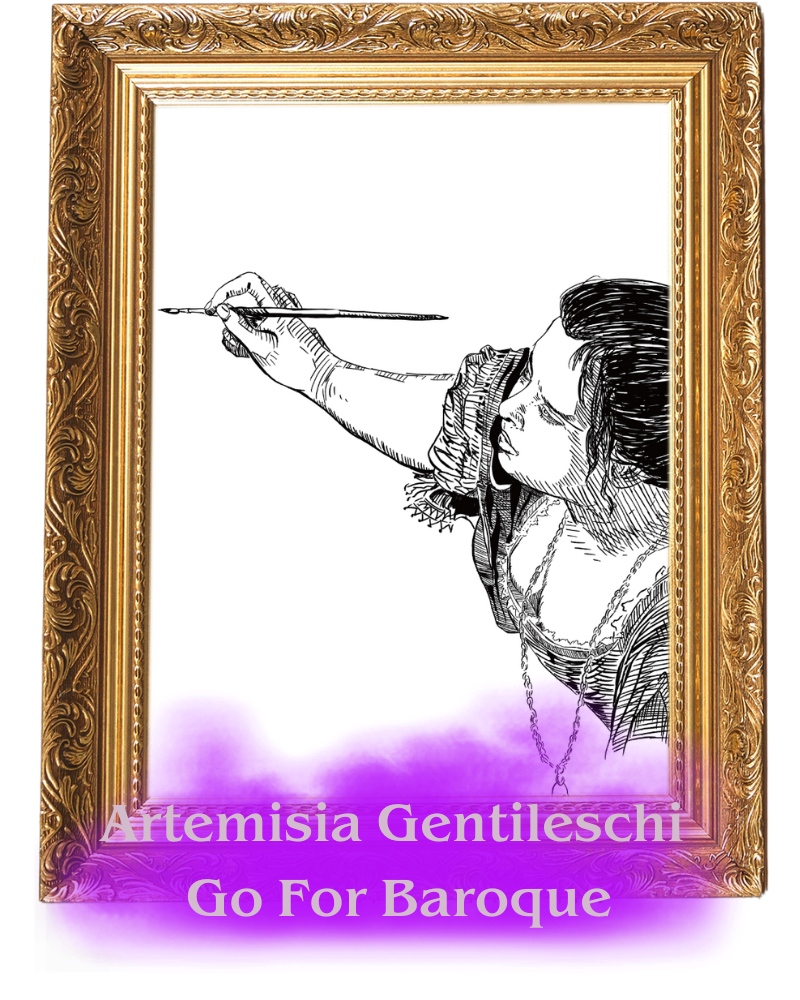 Artemisia Gentileschi is the most renowned female painter of the baroque era, and only female follower of Caravaggio’s dramatic realism.
Artemisia Gentileschi is the most renowned female painter of the baroque era, and only female follower of Caravaggio’s dramatic realism.
Still, Artemisia’s earliest paintings were all sold bearing her father’s signature. In spite of her successful career, supporting herself and her children, painting for the highest echelons of European society in Rome, Florence, Venice, Naples and London, including the Grand Duke of Tuscany and Philip IV of Spain, her work was still nearly lost to history.
A rare woman artist, and it isn’t only her talent that made her rare.
🎨 Artemisia Gentileschi’s first known work (which some scholars have attributed, in part, to her father) was painted in 1610, when she was 17 years old.
🖼 Titled Susanna and the Elders, the work depicts a biblical story in which a fair, pious wife is ogled by a group of lecherous male elders as she bathes. Though it wasn’t an uncommon subject for artists at the time, Gentileschi rendered it differently than most. In her version, the woman being aggressed—and her response upon discovering that she’s being watched—takes center stage. “Artemisia’s Susanna presents us with an image rare in art, of a three-dimensional female character who is heroic,” Gentileschi’s biographer Mary D. Garrard has explained. Unlike other representations, “the expressive core of Gentileschi’s painting is the heroine’s plight, not the villains’ anticipated pleasure,” Garrard continued.
Biography notes:
📍7/8/1593 Rome – 1653 Naples Italy
Artemisia Gentileschi was an Italian Baroque painter, first successful female painter, painted strong courageous rebellious powerful females as protagonists, first woman accepted into Florence’s Academy of Design,
Source: Bad Girls Throughout History
Artemisia’s hands were crushed with thumbscrews to prove the truth of her testimony in the trial against her rapist.
Source: Blood Water Paint by Joy McCullough
Raped by Agustino Tassi, who was engaged to teach her perspective. The only reason there was a trial was her father, also a painter though of lesser skill than Artimisia, agreed to sue Tassi for the property damage that resulted from the rape, (to his daughter, now unmarriagable) – trial went on for 7 months.
She maintained her innocence, which was tested through many physical examinations to determine the date of her lost virginity. She shouted at Tassi, “This is the ring you give, and these are your promises!”
She went on to paint powerful depictions of women from mythology and the Bible, many showing scenes of great violence. She made 5 paintings of Judith, who saved the Hebrews by beheading Assyrian general Holofernes. Collected by King Charles 1 of England and by Michelangelo’s nephew, she was a friend to Galileo, another member of the Accademia del Disegno in Florence.
💰 Artemisia also had to pursue fair pay.
To one patron she wrote, “I was mortified to hear that you wanted to deduct one third from the already low price I had asked. I must tell your Lordship that this is impossible, and that I cannot accept a reduction, both because of the value of the painting and my great need.”
To another, “I have made a solemn vow never to send my drawings because People have cheated me. Just today, I found out that, having done a drawing of souls in purgatory for the Bishop, he, in order to spend less, commissioned another painter using my work. If I were a man, I can’t imagine it would have turned out this way.”
🕊After her death she was nearly forgotten. Her father was credited with most of her work.
Only recently has Gentileschi finally been recognized as one of the greatest painters of her time - the most celebrated female painter of the 17th century.
She worked in Rome, Florence, Venice, Naples and London, for the highest echelons of European society, including the Grand Duke of Tuscany and Philip IV of Spain.
Following the trial, Artemisia married a little-known Florentine artist by the name of Pierantonio di Vincenzo Stiattesi, and left Rome for Florence shortly thereafter. There she had five children and established herself as an independent artist, becoming the first woman to gain membership to the Academy of the Arts of Drawing in 1616.
Artemisia returned to Rome in 1620, beset by creditors after running up debts, and she remained there for 10 years (except for a trip to Venice in 1628).
📍Our tea honoring Artemisia is called Go For Baroque. It’s an herbal blend that brews up ruby red, as rich as the colors in Artemisia ’s paintings of strong, powerful, courageous women.






0 Comments